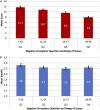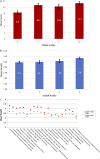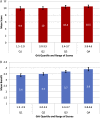Student Attitudes Contribute to the Effectiveness of a Genomics CURE
- PMID: 36061313
- PMCID: PMC9429879
- DOI: 10.1128/jmbe.00208-21
Student Attitudes Contribute to the Effectiveness of a Genomics CURE
Abstract
The Genomics Education Partnership (GEP) engages students in a course-based undergraduate research experience (CURE). To better understand the student attributes that support success in this CURE, we asked students about their attitudes using previously published scales that measure epistemic beliefs about work and science, interest in science, and grit. We found, in general, that the attitudes students bring with them into the classroom contribute to two outcome measures, namely, learning as assessed by a pre- and postquiz and perceived self-reported benefits. While the GEP CURE produces positive outcomes overall, the students with more positive attitudes toward science, particularly with respect to epistemic beliefs, showed greater gains. The findings indicate the importance of a student's epistemic beliefs to achieving positive learning outcomes.
Keywords: CUREs; active learning; bioinformatics; genomics; undergraduate education.
Copyright © 2022 Lopatto et al.
Conflict of interest statement
The authors declare no conflict of interest.
Figures




References
-
- Lopatto D, Alvarez C, Barnard D, Chandrasekaran C, Chung HM, Du C, Eckdahl T, Goodman AL, Hauser C, Jones CJ, Kopp OR, Kuleck GA, McNeil G, Morris R, Myka JL, Nagengast A, Overvoorde PJ, Poet JL, Reed K, Regisford G, Revie D, Rosenwald A, Saville K, Shaw M, Skuse GR, Smith C, Smith M, Spratt M, Stamm J, Thompson JS, Wilson BA, Witkowski C, Youngblom J, Leung W, Shaffer CD, Buhler J, Mardis E, Elgin SC. 2008. Undergraduate research. Genomics Education Partnership. Science 322:684–685. doi:10.1126/science.1165351. - DOI - PMC - PubMed
-
- Auchincloss LC, Laursen SL, Branchaw JL, Eagan K, Graham M, Hanauer DI, Lawrie G, McLinn CM, Pelaez N, Rowland S, Towns M, Trautmann NM, Varma-Nelson P, Weston TJ, Dolan EL. 2014. Assessment of course-based undergraduate research experiences: a meeting report. CBE Life Sci Educ 13:29–40. doi:10.1187/cbe.14-01-0004. - DOI - PMC - PubMed
Grants and funding
LinkOut - more resources
Full Text Sources
Miscellaneous

